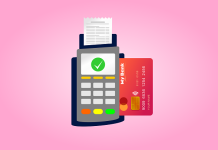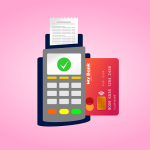Verifying customer identity helps keep your business safe from fraud and costly mistakes. It also builds trust, which is key to keeping customers coming back.
Many businesses think a quick name check is enough, but there’s more to it. Good verification means making sure each customer is real and matches their details.
With more people shopping and signing up online, this step has become more important than ever. Skipping it can lead to lost revenue, security risks, and unhappy users.
In this article, you’ll learn what it takes to verify customer identity the right way, without overcomplicating the process.
Valid Government-Issued ID
A valid government-issued ID is one of the most reliable ways to verify someone’s identity. Common forms include a driver’s licence, passport, or national identity card.
These documents usually contain a full name, photo, date of birth, and sometimes a signature. By comparing these details with the information provided during sign-up, businesses can confirm the customer’s identity. This process helps prevent fraud and ensures that a person is who they claim to be.
Manual checks work for small businesses, but digital ID verification tools can speed up and strengthen the process. These tools use machine learning and image recognition to check if a document is real or has been tampered with. They can catch issues like expired IDs or mismatched names.
Automated document verification saves time, reduces human error, and improves accuracy for businesses handling large volumes of customers or working online.
Biometric Verification Tools
Biometric verification adds an extra layer of identity proof by using physical traits that are hard to fake or copy. This includes fingerprint scanning, facial recognition, voice analysis, and even iris detection.
Since these features are unique to each person, they offer strong protection against identity fraud. Many smartphones now support biometrics, making this method more accessible for businesses that want to include it during onboarding or login.
For example, a user might be asked to take a selfie, which is then compared to their ID photo in real-time. If the match is close enough, the system approves the verification.
Some systems also check for signs of spoofing, like printed photos or masks. Adding biometric tools helps confirm that the person presenting the ID is truly the account owner. It’s a great way to stop identity theft before it starts.
Multi-Factor Authentication (MFA)
Multi-factor authentication (MFA) requires users to confirm their identity in more than one way. This usually means entering a password plus something else, like a code sent to their phone or a biometric scan.
MFA protects accounts even if a password gets stolen or guessed. It’s a critical part of modern security, especially for accounts that hold sensitive data or payment information.
MFA is often used after the initial sign-up to verify customer identity. It can be triggered during important actions, like logging in from a new device or making a large transaction.
Businesses can choose which factors to use based on the level of risk. While it adds an extra step, MFA greatly reduces the chance of someone gaining access using stolen information. It’s a simple but powerful tool for keeping customer accounts secure.
Address and Phone Number Verification
Verifying a customer’s address and phone number should be at the top of your KYC checklist. It helps confirm that the contact information they provide is accurate and active, and adds another barrier against fake or duplicate accounts.
Address verification can be done through databases like postal records, utility bills, or shipping confirmations. This is especially useful for businesses that send physical goods or offer services tied to a specific location.
Phone verification is quick and effective. It usually involves sending a one-time code by SMS, which the customer must enter to complete their profile or transaction.
This proves the number is real and in the user’s control. In fraud prevention, verified contact details make it easier to reach the right person if something goes wrong. They also support customer service teams by confirming that their records are up to date.
Secure Data Storage and Privacy Compliance
Verifying identity is only one piece of the puzzle. Businesses also need to store personal information safely and follow privacy laws. Sensitive data like ID numbers, facial scans, and phone numbers must be encrypted and kept in secure systems.
Access should be limited to trained staff, and logs should track who views or updates this information. Weak data protection can lead to major security breaches, fines, and loss of trust.
Compliance with privacy regulations such as the GDPR (Europe) or CCPA (California) is also essential. These laws give people control over how their data is collected, used, and shared.
Businesses must provide clear policies and obtain consent for data use. Customers also have the right to access, change, or delete their information. Following these rules ensures you avoid penalties and earn customer trust.
Real-Time Identity Verification APIs
Real-time identity verification APIs help businesses instantly confirm a user’s identity during onboarding. These tools connect to trusted databases and use machine learning to cross-check names, addresses, IDs, and other data points.
Unlike manual checks, they work in seconds and can quickly flag inconsistencies or red flags. This improves business security and customer experience.
Many companies use APIs to reduce friction during sign-up without sacrificing accuracy. For example, a bank might use an API to check if a driver’s licence number is valid and matches the name provided.
At the same time, the system could cross-reference the data with credit bureaus or government records. These tools are valuable for scaling verification while keeping the process smooth and secure.









































